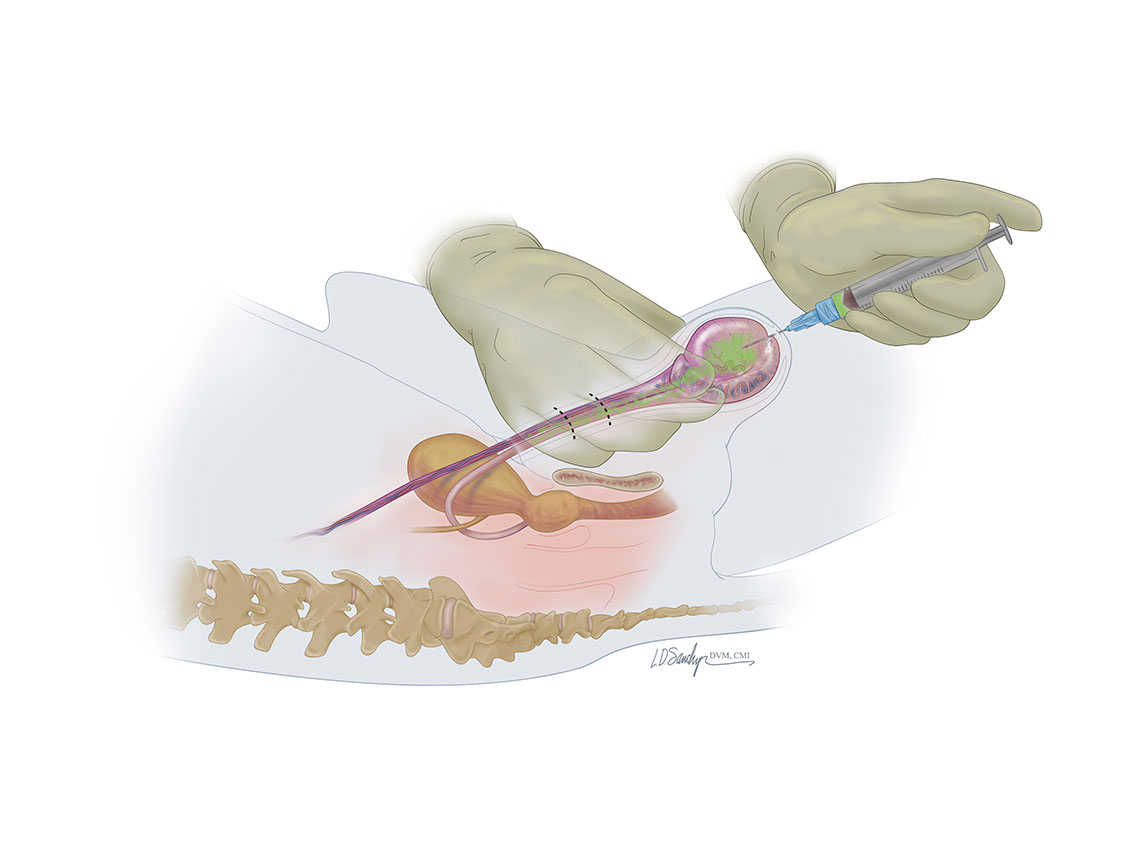Local Anesthetic Techniques For Castratrations

Feline or canine testicular block
INDICATIONS: Feline and canine castrations.
INSTRUCTIONS:
- Choose the desired local anesthetic.* Calculate the low end of the dose of 1 mg/kg (cat)/ 2 mg/kg (dog) of bupivacaine, ropivacaine, or 4 mg/kg (cat), 6 mg/kg (dog) of lidocaine.
- Complete a rough surgical scrub of the testicles and the incision site (scrotal [cat] or prescrotal [dog]).
- Insert a 22-gauge needle into the center of the testicle with the tip of the needle pointed toward the spermatic cord.
- Aspirate and inject ½ of the calculated volume into each testicle or inject until the testicle suddenly feels turgid, whichever occurs first.†
- The drug migrates up the spermatic cord and provides pain relief from surgical crushing of the cord and associated vessels.
- To provide pain relief from the incision:
- Cats: Continue infiltrating as the needle exits the testicular body to block the skin and subcutaneous tissue.
- Dogs: Inject local anesthetic in skin and subcutaneous tissue at the incision site.
*Although bupivacaine or ropivacaine provide a longer duration than lidocaine, some clinicians are more comfortable with lidocaine because it has a higher safety margin if accidentally injected IV and the testicles are highly vascular. Thus, personal comfort with the drugs dictates final drug choice for this block.
†On removal, the testicle may appear hemorrhagic.
Artwork by Lauren D. Sawchyn, DVM, CMI.
IMPORTANT: The authors, reviewers, and editors of the material in the 2020 AAHA Anesthesia and Monitoring Guidelines for Dogs and Cats have made extensive efforts to ensure that treatments, drugs, and dosage regimens are accurate and conform to the standards accepted at the time of publication. However, constant changes in information resulting from continuing research and clinical experience, reasonable differences in opinions among experts, unique aspects of individual clinical situations, and the possibility of human error in preparing such an extensive text require that the veterinarian exercise individual judgment when making a clinical decision and, if necessary, consult and compare information from other sources. In particular, the veterinarian is advised to check the drug’s product insert before prescribing or administering it, especially if the drug is unfamiliar or is used infrequently.





